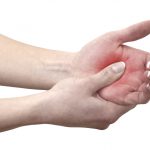
Senegal saba has powerful anti-inflammatory properties
Thursday, February 14, 2019 by Michelle Simmons
http://www.naturalnewsherbs.com/2019-02-14-senegal-saba-has-powerful-anti-inflammatory-properties.html

African researchers have found that the leafy stems of Senegal saba (Saba senegalensis) have anti-inflammatory properties The study, which was published in the journal Phytothérapie, also supports the traditional use of Senegal saba in treating diseases associated with inflammation.
- Senegal saba has been used in traditional medicine for the treatment of diseases associated with inflammation in Burkina Faso.
- In the study, the researchers aimed to evaluate the pharmacological action of the aqueous extract of its leafy stems on swelling and pain and to investigate its antioxidant properties.
- The results of the study showed that Senegal saba fruit extract reduced edema in the first hour, the third hour and five hours after the injection of carrageenan.
- Maximum inhibition was attained at the fifth hour after the injection of carrageenan.
- The researchers also evaluated the analgesic effect of the aqueous extract of Senegal saba at doses of 100, 200, 300 milligrams per kilogram (mg/kg).
- They found that the aqueous extract significantly reduced the abdominal writhing in mice.
- The analgesic effect of the aqueous extract at a dose of 200 mg/kg is comparable to that of 150 mg/kg acetaminophen.
- They also found that Senegal saba extract exhibited a significant antioxidant capacity by inhibiting lipid peroxidation and lipoxygenase.
- Senegal saba extract was also found to contain tannins, flavonoids, saponins, coumarins, anthocyanosides, triterpenes, and sterols.
In conclusion, these findings indicate that Senegal saba possesses anti-inflammatory properties and can be used against inflammatory diseases.
To read more studies on natural medicines like Senegal saba, visit NaturalMedicine.news.
Journal Reference:
Yougbare-Ziebrou MN, Ouedraogo N, Lompo M, Bationo H, Yaro B, Gnoula C, Sawadogo WR, Guissou IP. ANTI-INFLAMMATORY, ANALGESIC AND ANTIOXIDANT ACTIVITIES OF AN AQUEOUS EXTRACT OF SABA SENEGALENSIS PICHON STEMS WITH LEAVES (APOCYNACEAE). Phytotherapie. 2015; 14(4): 213-219. DOI: 10.1007/s10298-015-0992-5





